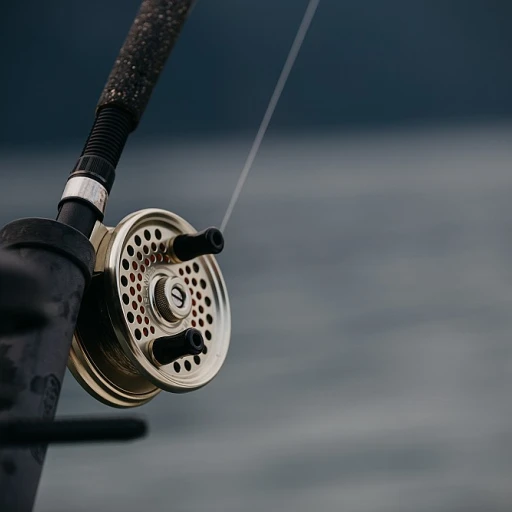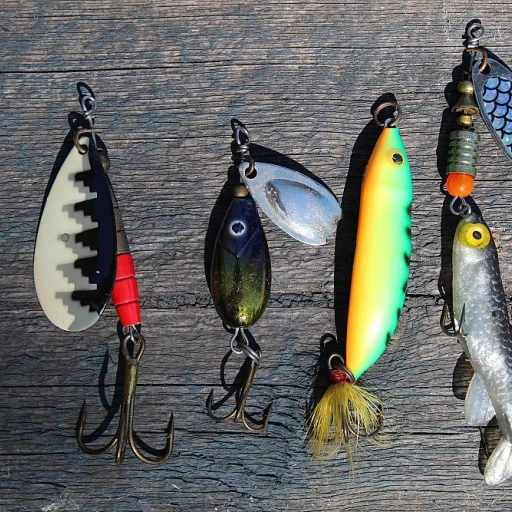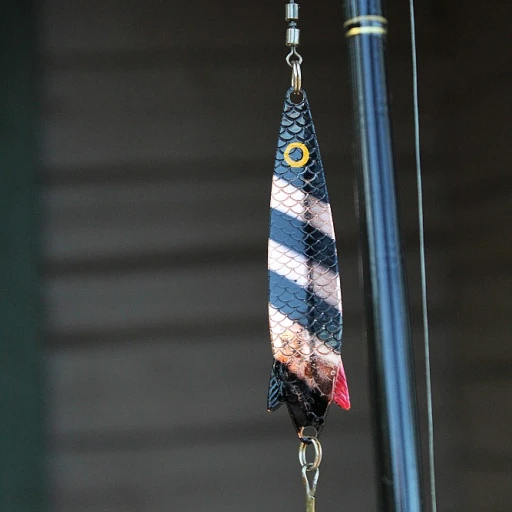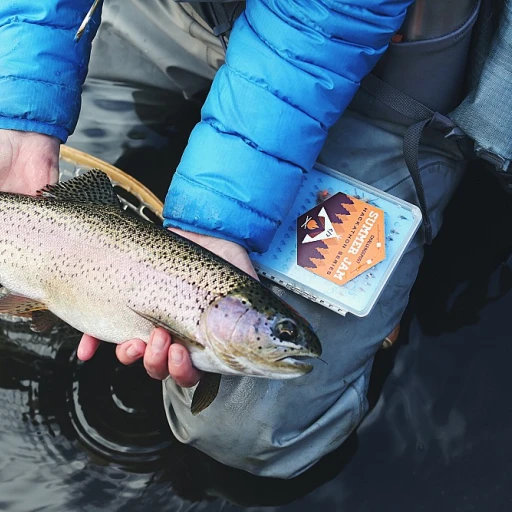
Historical giants: the largest fish records ever set
Historic ocean giants that redefined angling history
Throughout the annals of fishing history, there have been monumental fish that left anglers in awe. One of the most remarkable catches was the great white shark caught by Alfred Dean off the coast of Ceduna, Australia, in 1959. This behemoth of the ocean tipped the scales at an astounding 2,664 pounds, setting a record that's still held today. The International Game Fish Association (IGFA) officially recognizes this catch as the heaviest fish ever caught by rod and reel.
Another legendary catch is Ken Fraser's bluefin tuna, snagged off the waters of Nova Scotia, Canada, in 1979. This massive tuna weighed in at a mind-blowing 1,496 pounds, solidifying Fraser's name in the fishing hall of fame. Bluefin tuna are notorious for their power and size, making this catch even more impressive.
The wels catfish: a freshwater beast
When it comes to freshwater giants, the wels catfish stands out. Caught in European rivers and lakes, some of these massive catfish have weighed over 600 pounds. German angler Karl-Heinz Höhne set a record with a wels catfish caught in Italy's River Po that weighed 297 pounds. This catch showcases the extreme sizes these freshwater giants can attain.
Legends of the deep: less known, but equally impressive
Among lesser-known but awe-inspiring giants is the pacific blue marlin. Angler Jay de Beaubien landed a 1,376-pound specimen off the coast of Hawaii in 1982, a catch celebrated for both its size and the grueling effort required to bring it in.
Equally impressive is the greenland shark, another marine giant. While not often recorded in recreational fishing records, these sharks can grow exceptionally large. The largest known was estimated to be around 21 feet and weighing over 2,200 pounds. These prehistoric creatures continue to fascinate anglers and scientists alike.
Game fish records to remember
The IGFA maintains records of the largest game fish caught globally, providing a repository of angling achievements. Noteworthy among these is the black marlin, with a record set by angler Alfred Glassell Jr. in 1953, who caught a 1,560-pound specimen off Cabo Blanco, Peru.
It’s not just the size, but the stories and dedication behind these catches that captivate us. The methodology, the skill, and sometimes the sheer luck involved turn these moments into legendary tales. For more on taking on the challenge of recreational fishing for these ocean giants, check out this article on recreational fishing for barracuda. The fervor and passion for angling continue to drive enthusiasts to break records and make history.
Timeless competition: anglers who set the bar
Record-breaking anglers who changed fishing forever
Fishing isn't just about skill; it's about perseverance and, sometimes, sheer luck. But some anglers go above and beyond, setting records that leave the fishing community in awe. One such name is Alfred Dean. Back in 1959, Alfred Dean made headlines by reeling in a colossal great white shark weighing a staggering 2,664 pounds (1,208 kg) off the coast of Ceduna, Australia. To this day, nobody has managed to eclipse this remarkable feat.
Another iconic figure in the fishing world is Ken Fraser, hailing from Nova Scotia, Canada. On October 26, 1979, Fraser caught the largest bluefin tuna ever recorded. His catch weighed in at a jaw-dropping 1,496 pounds (678.6 kg) and remains unchallenged in the record books. Fraser's skill and determination provided a stirring example to fishing enthusiasts globally.
Exemplary figures from igfa
The International Game Fish Association (IGFA) has been a critical body in preserving and validating fishing records. They’ve documented some of the most formidable catches and the anglers behind them. One notable case is Frank Mundus, often credited with inspiring the character of Quint in the film Jaws. Mundus caught a monstrous great white weighing 3,427 pounds (1,554 kg) in 1986, a catch recognized by the IGFA, though not an official record due to the use of a harpoon.
Then there’s Holly Beck, who set a world record by catching the largest wels catfish ever recorded on a rod and reel. This gigantic catfish weighed 297 pounds 9 ounces and was caught in Spain's Ebro River. Beck’s feat illustrates the IGFA's role in ensuring these achievements are accurately recorded, adding a layer of legitimacy and admiration around these moments.
Modern marvels and future prospects
As fishing techniques and tools evolve, new records are constantly being set. The introduction of advanced fishing technology, such as sonar and high-durability rods, has revolutionized the sport and may continue to push boundaries for years to come. New anglers are entering the scene, inspired by past legends and ready to set new records of their own.
The future sees promising young anglers like Donald Takayama from Hawaii, whose devotion to sustainable fishing practices has garnered him significant attention. Takayama aims to break records while respecting marine life, a mindset that might very well shape the future of fishing records.
If you're intrigued by the captivating stories of record-breaking anglers and their fantastic journeys, check out our article on big fish stories that continue to inspire newcomers to the fishing world.
Majestic species: the biggest fish ever caught by type
Legendary giants of the sea
When it comes to the biggest fish ever caught, certain species stand out as legends. Among these, the great white shark and blue marlin are certainly notable.
One of the most famous records belongs to a great white shark caught by Alfred Dean off the coast of Australia in 1959, weighing an incredible 2,664 pounds. Similarly, the largest blue marlin was caught by Paulo Amorim in 1992 in Vitoria, Brazil, and weighed 1,402 pounds.
Catfish colossuses
Within the freshwater category, the wels catfish holds the title of the largest catfish ever caught. Benjamin Gründer achieved fame when he landed a 297-pound wels catfish in Italy’s Po Delta in 2015. The Mekong giant catfish is another heavyweight, boasting a staggering catch in Thailand weighing 646 pounds in 2005, crowned as the largest freshwater fish ever caught.
Tantalizing tuna
Ken Fraser made history with his remarkable catch of a 1,496-pound bluefin tuna in Nova Scotia, Canada, in 1979. This record is yet to be surpassed, standing as a testament to Fraser's angling prowess and the thrilling potential of the Atlantic waters.
Marlin: the ocean’s spear
The Pacific blue marlin is another ocean giant that draws both awe and excitement among anglers. The current record holder, Gary Merriman, caught a 1,166-pound marlin off the coast of Cabo Blanco, Peru, a location renowned for its big-game fishing.
Wrestling with game fish giants
Game fish like black marlin and tiger shark also top the scales in angler tales. The biggest black marlin ever caught weighed a jaw-dropping 1,560 pounds, landed by Alfred Glassell Jr. off the Peruvian coast in 1953. Greenland sharks too have shocked anglers with astounding sizes; a notable catch was recorded in Norway, weighing an immense 2,209 pounds.
For fishing enthusiasts looking to reel in these giants, understanding the specifics of each species and perfecting the art can be as thrilling as the catches themselves. Check out our extensive tips and techniques at this guide by top local fishing clubs to increase your chances of making history.
Breaking records: the evolution of fishing techniques
Advanced gear: revolutionizing fishing success
When it comes to breaking records in the fishing world, the evolution of technology and techniques has played a pivotal role. Modern advancements have drastically changed the way anglers approach fishing, particularly for bigger catches. From sophisticated fish finders to high-strength tackle, today's gear is miles ahead of what was available to previous generations.
Enhanced tackle: strength meets precision
The International Game Fish Association (IGFA) has documented countless examples of how upgraded tackle has facilitated record-breaking catches. Back in the day, anglers relied on rudimentary rods and lines. Fast forward to now, and we have technologically advanced rods, reels, and lines designed to withstand the might of colossal fish. Take, for instance, the case of Ken Fraser, who caught the largest bluefin tuna weighing 1,496 pounds off Nova Scotia in 1979. Today’s advanced gear could very well say goodbye to even bigger records being shattered in the near future.
Sonar and GPS: eyes under water
Another significant development is the use of sonar and GPS technology. These tools allow anglers to locate schools of fish and understand underwater topography with unprecedented accuracy. This tech was non-existent when Alfred Dean caught his record-breaking 2,664-pound great white shark in 1959 off the coast of Australia. Now, such technology can give an angler a clear advantage by identifying the exact locations where large fish are likely to be hiding.
Baiting strategies: smart approach to lures
Modern baiting strategies have also evolved to increase the chances of landing a big one. Anglers now use a mix of traditional baits and advanced lures designed to mimic the prey of specific fish species. Hi-tech lures can even emit the same bioelectrical signals that fish find irresistible. This blend of old and new techniques creates a more nuanced approach to baiting, significantly raising the probability of a trophy catch.
Sustainable practices: balancing success and conservation
While the quest for breaking records continues, there's a growing awareness about sustainable fishing practices. Efforts are being made to ensure that while anglers aim for the biggest fish, they also contribute to the preservation of marine ecosystems. Catch-and-release programs and tagging initiatives have become more popular, providing valuable data that helps in the conservation of large fish species.
Angler’s edge: mastering the art and science
Modern-day anglers combine tradition with innovation, bringing a unique edge to the sport. They often reference iconic moments in fishing history, like Greenland’s colossal halibut catch or Italy’s massive marlin haul, while continually seeking to break new ground. Alfred Dean’s great white shark or Ken Fraser’s bluefin tuna stand testimony to what’s possible when preparation meets opportunity.
With all these advancements, it's clear that the techniques and equipment available today are setting the stage for even more awe-inspiring record catches. And as the sport continues to evolve, so too will the strategies that anglers employ to hook the biggest fish ever caught.
Controversial catches: disputes and debates in fish record history
Legal battles over record certifications
One of the most notable controversies surrounding the biggest fish ever caught involves the certification of records by the International Game Fish Association (IGFA). Renowned angler Ken Fraser found himself at the epicenter of such a dispute when his record-breaking bluefin tuna catch in November 1979 sparked controversy. Weighing in at an astounding 1,496 pounds, Fraser's catch raised eyebrows, with some critics questioning the methods and equipment used.
Notably, the catch was subjected to rigorous verification by the IGFA, which includes reviewing photographic evidence, witnesses, and the equipment employed. The bluefin tuna’s integrity was extensively verified before it received its official place in the IGFA records. This instance underscores the meticulous standards the IGFA upholds to maintain credibility in the fishing community.
The great white shark debate
In 1959, an Australian angler named Alfred Dean caught a 2,664-pound great white shark off the coast of Ceduna, Australia. This remarkable feat was initially met with universal acclaim. However, Dean's record quickly came under scrutiny amid claims that the shark had been dead or incapacitated when it was reeled in. The IGFA conducted a thorough investigation, reaffirming the legitimacy of Dean's catch, but the debate lingers in some fishing circles to this day.
This controversy highlights the intense scrutiny record-breaking catches face and the lengths to which organizations like the IGFA go to ensure authenticity.
Unverified catches: myth versus reality
The fishing community is rife with tales of unverified massive catches that spark heated debates. For instance, stories of supposedly monstrous wels catfish surfacing in the murky waters of Europe, mainly Spain and Italy, often make the rounds but are rarely backed by verifiable proof. These fish, rumored to weigh upwards of 400 pounds, tantalize and frustrate anglers and enthusiasts alike due to lack of evidence.
These unverified claims keep the community buzzing, despite the IGFA's stringent criteria for record recognition.
Equipment regulations and their impact on records
Another hot topic in the fishing records debate concerns the types of equipment allowed in record attempts. The IGFA has set comprehensive guidelines detailing permissible rods, reels, and tackle. These stipulations have spawned controversies where anglers’ catches were dismissed due to non-compliance. For example, catches from Greenland that entailed using unconventional gear often lead to heated discussions on whether innovations in equipment should be embraced or rejected.
This aspect of record-setting fishing is critical as advancements in technology continually push the boundaries of what’s possible, sometimes muddying the waters of what’s considered fair play.
Notable locations: hotspots for record-breaking fish catches
Cabo blanco, Peru: the shark hotspot
Among the most famous locales for record-breaking catches is Cabo Blanco, Peru. This place is legendary thanks to the 1,560-pound black marlin caught by Alfred Dean in 1953, an IGFA tackle record that still stands. The Pacific waters here are also notorious for producing enormous game fish, with anglers flocking to experience the rich fishing culture and exceptional yields.
Great white shark hauls off the coast of Australia
Australia isn’t just about beautiful beaches and unique wildlife—it’s a haven for anglers pursuing massive records. The country burst onto the record scene with Alfred Dean's record-setting 2,664-pound great white shark in 1959 off the coast of Ceduna, a spot known for its abundant marine life. This catch still holds the IGFA tackle record for the largest great white caught with rod and reel.
Nova Scotia’s giant bluefin tuna
Ken Fraser etched his name into fishing history books with a 1,496-pound bluefin tuna catch off Nova Scotia, Canada, in 1979. This location is a bluefin tuna paradise, attracting anglers aiming to break records, thanks to the nutrient-rich waters of the Atlantic.
Thailand's monster catfish
When we talk about the largest freshwater fish ever caught, Thailand's Mekong River comes to mind. The river is famous for its monstrous wels catfish. In 2005, fishermen caught a catfish weighing 646 pounds, marking it as the largest freshwater fish ever recorded, as per the IGFA.
Greenland's colossal shippers
Greenland’s icy waters are home to giant Greenland sharks, known for their size and longevity. Anglers have reported catches nearing the 2,000-pound mark. Although there’s debate over the exact records due to the species' slow growth and deep-sea habitation, it’s a hotspot for thrill-seeking anglers.
Florida's diverse fishing spots
Florida is synonymous with angling adventures, from the Atlantic to the Gulf of Mexico. Cape Hatteras, Key West, and the Florida Keys are well-known hotspots. The diverse range of fish, such as marlins, groupers, and mackerels, offer plenty of record-breaking opportunities. The state’s reputation is cemented by a collection of IGFA-record catches across various species and weights.
Fish tales: personal stories from record-breaking anglers
Ken fraser and the giant bluefin tuna
In 1979, Ken Fraser etched his name in fishing history by landing the largest bluefin tuna ever caught. Weighing an astonishing 1,496 pounds, this colossal fish was caught off the coast of Nova Scotia, Canada. To this day, Frasier’s record, verified by the International Game Fish Association (IGFA), remains unbeaten. Fraser's tale is a testament to the perseverance and strength required in tackling such maritime giants.
Alfred dean and the infamous great white shark
Alfred Dean's remarkable achievement in 1959 is another fishing feat that still holds its ground. Off the coast of Ceduna, Australia, Dean caught a great white shark weighing an astonishing 2,664 pounds in just 50 minutes using only a rod and reel. This record catch has left many anglers awestruck, considering the sheer power and danger of grappling with such a formidable predator.
Northern freshwater legend: the wels catfish
In Europe, the wels catfish reigns supreme in the freshwater category. Karl Hoferman's 2005 catch in Spain's River Ebro, tipping the scales at 280 pounds, is a notable landmark. The wels catfish lures many anglers into the depths of Europe's freshwater systems, each hoping to surpass Hoferman's impressive record.
Cabo blanco's black marlin: a tropical titan
Alfred Glassell Jr.’s 1953 black marlin catch near Cabo Blanco, Peru, is another iconic record. Weighing 1,560 pounds, this gigantic fish marked the largest black marlin ever caught on rod and reel. It’s an achievement that continues to inspire anglers to this day, with many venturing to the tropical waters of Cabo Blanco in hopes of history repeating.
Personal insights: echoing through time
These anglers' personal stories are not just about capturing enormous fish; they reflect their unwavering dedication, preparation, and thrilling encounters. Their experiences often narrate the emotions of exhilaration, fatigue, and triumph, painting a vivid picture for enthusiasts and inspiring new generations.
A memorable legacy
The tales of record-breaking catches resonate deeply in the fishing community, often passed down through stories and traditions. They spur conversations and fuel dreams of what could be the next biggest fish ever caught. Despite controversies and debates surrounding some records, the exhilaration of these historical feats permeates the fishing community and keeps the spirit of the sport alive.
The future of fishing: what’s next for record-breaking catches?
Innovation in tackle and technology
The world of fishing has always evolved, with each era seeing advancements in tackle and techniques. Today's anglers have access to gear that previous generations couldn't even dream of. This tech progression is a key factor in frequently broken fishing records. Rods made from carbon fiber, ultra-sensitive lines, and sonar fish finders are now commonplace in serious fishing expeditions.
Imagine Ken Fraser back in 1979, landing that colossal bluefin tuna off Nova Scotia. He achieved it with the technology of his time, which can't compare to the tools modern-day anglers have at their disposal. Yet his 1,496-pound catch still holds weight in the angling world. The International Game Fish Association (IGFA) remains vigilant in keeping these feats well documented and verifiable.
Environmental awareness and conservation efforts
Conservation efforts have become central to fishing, influencing how anglers approach catching and releasing fish, especially the larger species. For instance, the Atlantic and pacific waters, home to the bluefin tuna and marlin, now have stricter guidelines and catch limits to maintain species populations.
This trend towards responsible fishing ensures that future generations can continue to enjoy the sport. Awareness about overfishing and its impact on marine ecosystems is not just for biologists; anglers are increasingly conscious of adopting sustainable practices.
Emerging destinations for record-breaking fish
Some destinations have consistently been hotspots for record-breaking catches. However, new locations are emerging as popular spots for giant fish. Thailand, known for its giant catfish, has seen a rise in anglers traveling specifically to catch these behemoths.
Historically, places like Cabo Blanco in Peru and the coast of Norway have been renowned for their monster fish. Now, places like Australia, home to massive tiger sharks, and the waters off Alaska, famous for gigantic halibut, are gaining popularity among anglers seeking their next big catch.
The role of global fishing communities and events
Global fishing communities and events play a crucial role in reporting and verifying record-breaking catches. The IGFA not only maintains records but also fosters a community where anglers can share their achievements and learn from each other. Events like the White Marlin Open and various shark fishing tournaments present opportunities for anglers to compete and push the limits of their skills and equipment.
These events also spotlight the importance of conservation, as they often include catch-and-release categories to promote sustainable fishing practices, ensuring that the sport remains viable for years to come.
Technology-driven challenges vs. traditional techniques
The debate between technology-enhanced fishing and traditional techniques continues. Purists argue that the essence of fishing is lost with high-tech gear, while modernists see it as a natural progression. This controversy adds a fascinating dimension to the sport, where anglers often find themselves juggling between the best of both worlds to make those record-breaking catches.

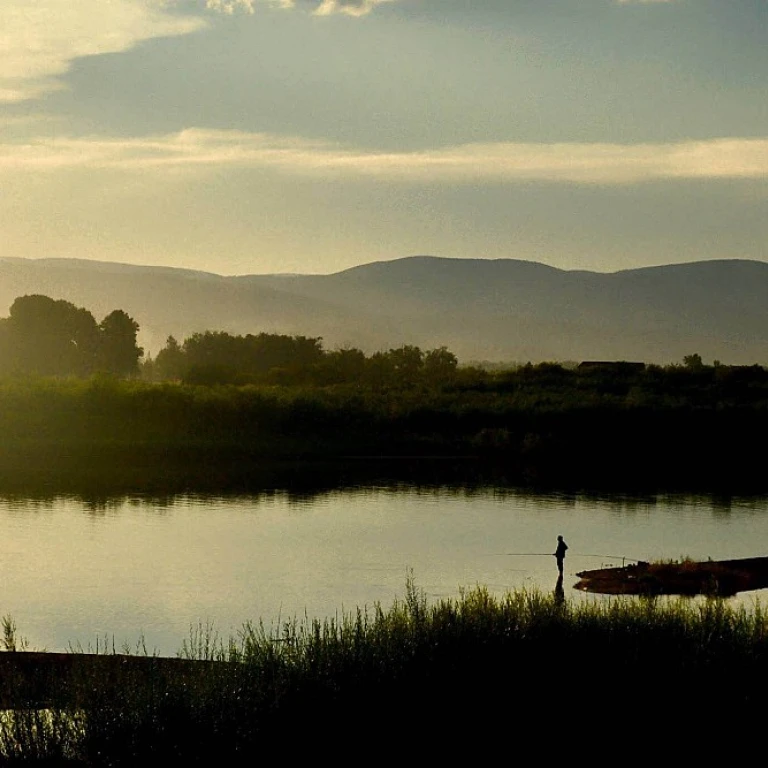



-large-teaser.webp)
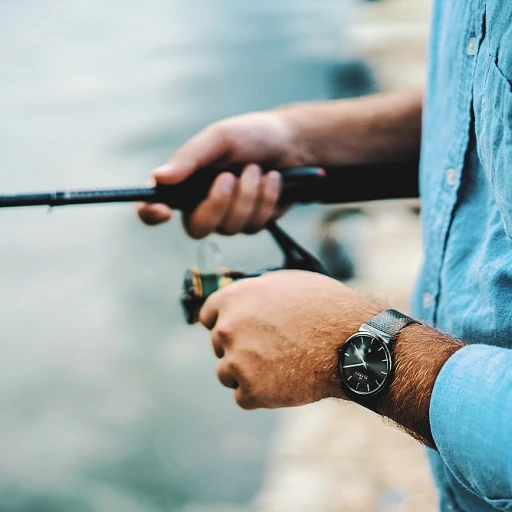
-large-teaser.webp)

